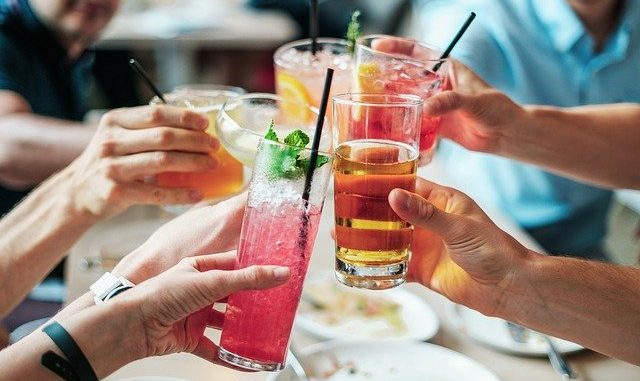
At this time of year all the major market report suppliers are wading in with their predictions for the next year and to some extent what they think will happen over the next decade. We thought we would have a go too ! Here we go then for our review of beverage trends for 2020.
The overarching aspect to all this is how consumer expectation have altered in the last few years. Their desires radically influence not only the formation of new ideas but whether they continue to stick around. Sustainability and reducing food waste are probably the most important considerations in food manufacture at this moment in time. Reducing food miles is an important issue for the middle classes. A lot of brands will be developing products that source locally sourced ingredients and wrap them up in eco-friendly packaging too.
The role of technology is apparent mainly to suppliers rather than consumers. The use of apps relying on blockchain technology is helping consumers work out where theri products are being sourced from fits with the interest in sustainability too.
It’s likely too that with veganism increasing, all sourced ingredients will have animal aspects removed and that includes trace materials used to maintain ingredients in a suitable form over their shelf-life. It covers all food groups at the moment but the movement is having a significant impact on product development. Wine incidentally has always been vegan-friendly (seems a bold statement to make given the use of some additives) and the symbolism is very much evident on the bottle label.
In terms of beverages there are a few ideas which appear to have gained traction over the years that look set to continue. A number of brands have continued the innovation path by introducing some new concepts but it felt as if 2019 was a little lacklustre with new introductions. Health and well being should continue to play their part as factors in consumer’s choices.
Some of the ideas we’ve seen that might have traction are considered.
Firstly, nitrogenation seems to have been on the cards for some time but it looks like it is gaining traction with consumers. The application is similar to carbonation but nitrogen gas rather than carbon dioxide is used.
Nitrogenation makes for a smoother feel to a sparkling drink rather than the harshness that seems to be apparent with carbonated drinks. Nitrogenated cold-brew coffee should be making landfall any time soon but at the moment only a few players have entered the marketplace and they do not appear yet to have gained enough traction.
Coffee and tea will see some new developments. Cold brew will no doubt see variants based on specific variants, possible alcoholic variants even. Acidity is an issue with flavour profile so reducing acidity by using particular coffee varieties could be employed. Some major brands have exploited their own favoured products and coffee. Pepsi for example have combined cola with coffee in Pepsi Café and so the caffeine story can be developed even further let alone have an interesting and viable flavour combination. It’s not a new idea as they had Pepsi Kona in 1996.
Incidentally, it cannot have escaped notice that the health messages around coffee and tea keep coming to the fore. The latest evidence suggests habitual tea drinkers can add a few years to their life expectancy. We can only see more cups being downed as we work at our keyboards.
The story behind CBD continues at a pace and it should be possible to see competitors to the likes of Green Monkey with their sparkling CBD drink. This business based in Birmingham has a relatively successful year and their background investigation of CBD is a superb illustration of looking both in the near-term and farther afield. Clinical evidence for efficacy of these products may well provide the much needed push.
There is a lot of interest in CBD oil as a health and wellness ingredient so we expect to see its inclusion as a significant ingredient for 2020.
The wellness market generally is seeing the creation of health divisions. we’ve moved on here from the standard round of functional drinks. Water (functional or otherwise), sports drinks and those with the odd ingredient are very last decade generally. A lot of non-alcoholic beverages offer proteins in one form or another and we should see more than whey. Pea protein isolates, novel starches with protein for texture, other amino-acids than BCAA should be getting into the marketplace.
Consumer health states are being addressed to some extent by offering a beverage that satisfies one or other of these. It could be energy, mind health, a particular improvement in a bodily function for want of a better term and usually a combination of two of these. Eye health, bone health etc. have been looked at over many years and beverages launched to meet these specific needs but they last a few years and then disappear as a new need state appears. Usually the issue is product developers needing to overcome the taste implications of a difficult, usually bitter ingredient.
The plant-based milks should maintain their presence but probably not gain much more ground on the shelf. According to the Innova Market Insights’ Top 10 Trends List, the plant based revolution is the number two trend. Part of that arena is driven by dairy alternatives and it is being cited as a key growth area in this consumer-led environment. However, there are some issues with labeling and just how much nut ingredient is used and there is an allergenicity issue to deal with too.
The story around oats could be improved upon because it has a fine narrative in health terms. A number of businesses are pushing oat-based beverages because it is growing. Chobani for example which is the US Greek yogurt brand has expanded its range considerably of oat drinks moving outside its traditional arena of yogurt.
We could also see the exploitation of chickpea as an ingredient in beverages. It has long been an idea in FoodWrite to develop a sweetened version using chickpea because of its reputed health benefits. Why not also consider Jerusalem Artichoke too ?
Functional drinks outside of CBD will keep their spot on the shelves. There should be plenty of added benefits available from the addition of non-protein ingredients like omega-3 fatty acids or branched chain amino-acids (BCAAs) and various plant-based ingredients like lycopene. Actually there are lots of novel ingredients out there which deserve attention but in the EU, they would normally need to be addressed under Novel foods regulations. In the USA, cannabis is still illegal under federal law although individual states have allowed it to be openly sold in the marketplace. The incorporation of the plant as an ingredient is feasible but its pungency means it still tastes a bit like mown grass or hay – clearly a great opportunity for anyone solving that issue !
We may see a return to more essential nutrients encompassing various vitamins and minerals but not necessarily beverages with everything thrown in. That type of all encompassing product is still niche and overcoming flavor issues still means that chocolate and strong fruit flavours will continue to be attractive for their masking or polarising effects.
What isn’t apparent in new NPD are those beverages marketed as low-calorie or diet. They are there competing for shelf-space and consumer’s eye-line along with classic and traditional offerings but the advertising space has been muted of late. Stevia based drinks along with low-calorie sweeteners dominate this sector and tweaking to satisfy the calorie conscious customer is still evident.
Ingredients that add functionality such as preservation, sweetness etc. should not really change. Sweetness appears to be slowly edging towards natural and there is always a scare story about aspartame but the clinical evidence is very weak at the moment. Colours will be natural but blue and green, in keeping with current ideas about the environment will be more prominent. Actually, the use of the word ‘green’ will be featured in product descriptions.
If you like flavours than fruits from those that are not normally run of the mill should be included. Before we look at those specific ones, the major brands will still be generating beverages including juices and smoothies that use traditional fruits but as blends. We shouldn’t be surprised to see new uses for citrus, for tropical blends using kiwi, prickly pear (Opuntia), guava and dragonfruit. The old flavours though still die hard and most of the leading players like Pepsi, Suntory and Coca-Cola are always launching new variants on the same theme – we just like them too much.
One geographical trend will be the adoption of more Asian flavours. They are certainly on the menu and most likely will include beverages with even flavours like chilli, yuzu (a species of citrus from Japan), plum like ube and so on.
Non-alcoholic beverages of all hues should be attractive. The current trend is for beers and lagers that have had the alcohol removed but it is possible to find a non-alcoholic beverage which is composed of a flavor combination that actually mimics a beer in flavor and texture. This business is involved with those who are close to launching such a product on a wider scale and we look forward to seeing how it develops in the near future.
As a short note, filtered milks seem to be the latest product in the dairy sector. Coca-Cola for example purchased the dairy brand Fairlife which produces all sorts of milk products including high-protein milkshakes, recovery drinks and the relatively new ultra-filtered milk products. The value- added dairy products are growing in both the USA and Europe. Consumers are said to be actively seeking milks with lower levels of sugar, protein and fat content. The reality though is that consumers also like the taste of full-fat milk too and it is still preferred in dessert offerings irrespective of the desire for reduced-fat etc. dishes.
One final aspect is the development of fully fermented drinks other than beer, cider and lager. It is reasonable to see more kombucha but with improved sensory properties. All these products can be produced as vegan-friendly with added fruit juice flavours to offer a range.



Leave a Reply